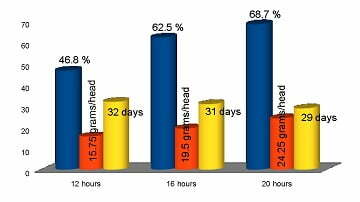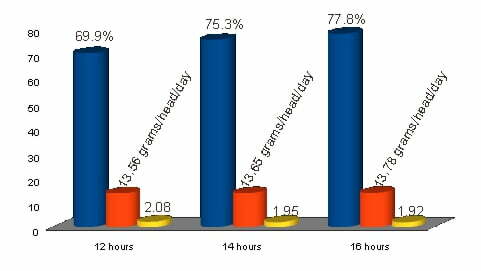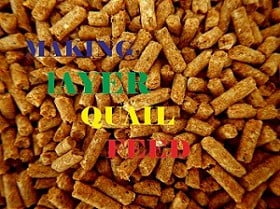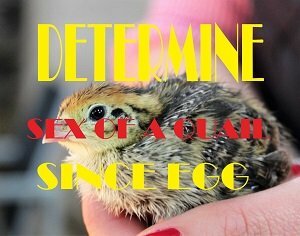Focus on DOQ, the Lamp Later
The best lights for quail are the umpteenth factor. Because besides, there are more decisive factors.
Whatever livestock, laying quail, laying hens, and laying ducks, Day old must be of high quality. If not, the result is definitely not satisfactory.
If you force it, you will get tired. Money, time, and energy have been spent, but the results are inadequate. It could even make us frustrated. Yes or no…?
Then, what is a quality day-old quail (DOQ) like?
If we are unfamiliar with this DOQ issue, it’s best to be patient first. Don’t rush into decisions.
Read a lot and find as much information as possible.
Maybe it could help, I once wrote an article about quail breeding management.
Please read if you don’t mind. This is the article link.
Quail livestock management results from apprenticeship.
Let’s just say we have a good quality DOQ. Next is the maintenance.
Maintenance must also be done as well as possible. Quail cages, the quality of feed, and drinking water, all need attention.
This is because, to produce quality DOQ growth, we need to pay attention to internal and external factors.
If the factor is internal, it is from the quality of DOQ, genetics, and the type of quail. We can’t do much about this.
So, before buying DOQ, you must really select it first.
If there are external factors, it is still possible for us to maximize it. For example, for feed, cages, and the environment.
We can still do our best.
But, I will now focus on other external factors. Namely the problem of light and lamp color in quail. So that we can determine the best lights for the quail later.
Light function in quail
It seems trivial, only lights but the discussion is lengthy. The function of the lights is clear so that the cage becomes bright and the quails are not dark.
There is some truth in such an opinion because that is the function of the light. But furthermore, it turns out that the lights can have a better effect on quail.
To be more precise, it is not the lamp that I will discuss but the light. The light is the rays emitted by the lamp.
Quail don’t care about which lamp you use. However, the quail’s body responds to the light from the lamps you use.
The response of the quail to this light is at its hormonal level. So, the quail hormone can be affected by the light from the lamp.
What hormones is it?
Light will enter through the eye. Then passed to the brain and stimulate the pituitary gland to produce hormones. (Please correct me if I’m wrong)
The hormone produced is a gonadotropin hormone. This hormone is a fertility hormone, you know. It is very closely related to reproduction.
Besides being able to affect reproductive hormones, light in quail can also stimulate growth hormones.
At a certain age, growth age, of course, the right kind of light color can stimulate a quail’s appetite to be higher. So that the weight gain becomes faster.
Getting interesting right? … let’s continue.
However, not all light can be effective in stimulating hormones in quail. Only certain types of light are monochromatic light.
Monochromatic light is, for example, red, yellow, green, and blue light. If it’s white, it’s not monochromatic but polychromatic.
Apart from the color of the light, it turns out that the length of exposure also matters.
One by one I will describe it later. So, keep reading. Read on. If you are tired, just rest first.
How many hours of lighting are optimal for quail?
We have 24 hours a day. The lights are at least lit at night. Approx is 12 hours.
Are 12 hours enough? Or do you need to add more? Be 16 hours or 20 hours for example.
Doesn’t that actually make electricity waste and production costs go up?
To find the answer, we will look at research conducted by Shakeel Ahmed Wagan from Pakistan. [1]
He wanted to research whether the length of time given light could have an effect on quail egg production, ration consumption, age at sex, and so on.
Each group of quail was given light for 12 hours, 16 hours, and 20 hours.
This research was conducted for 2 months.
In brief, the results can be seen in the graph below.
In the figure, there are three blocks, namely the 12 hours, 14 hours, and 16-hour block.
The blue color shows egg production, the orange color is the ration consumption and the yellow one shows the adult age of the quail.
Of the three parameters, the highest results were obtained by shining the quail for 20 hours.
Egg production is 68.7%, ration consumption is 24.25 grams/head and the age of adult sex is reached at the age of 29 days.
However, the research did not explain what color the lamp used was.
Therefore we will seek information from other studies.
Light colors such as red, yellow, green, and blue can have different effects on the performance of the quail.
Which one gives the best effect, let’s see the results together.
White light for 16 hours on quail [3]
The information above is not clear yet, in my opinion. For that, I provide information from other studies.
This time the research was carried out by Indonesians themselves. From Gajah Mada Universe, Yogyakarta province. But it’s been a long time.
His research used 180 female quail. It is 50 days old. So, at that age, the quail is really ready to lay eggs.
The light used is white. For the long exposure time, carried out for 12 hours, 14 hours, and 16 hours per day.
This research was conducted for a long time, namely 12 weeks or 3 months. So, in my opinion, it is representative enough to be used as a reference.
The results can be seen in the following image.
The description is almost the same as the picture above. The blue color indicates the average egg production, the orange color is the average ration consumption and the yellow color is the ration conversion.
The result is the same as the picture above. The highest performance of quail was in light for 16 hours.
The longer the lighting, the higher the performance of the quail. From these two different studies, we can conclude that lighting with lights for only 12 hours is still lacking.
However, it does not mean that the longer the lighting, the higher egg production. This is not quite right, in my opinion.
Watch for the highest egg production. The production value is 77.8%.
Normally, quail egg production is that much, right? Quail which is of good quality and maintained with good management can lay about 80% of eggs.
The light might just keep the quails from dropping easily. So the performance can be stable.
Light color for maximum quail production
How much is the effect of this light color?
I think I need to say that this increase in production does not mean that quails usually lay eggs once a day, then lay eggs 2 times a day.
Again, not something like that … If you want it like that, it means genetic engineering is needed. And it seems that until now there are no birds that can lay eggs 2 times a day.
The most likely thing is that the ration consumption will be more effective.
This means that effective is that the quail eat less, but egg production can be normal. This can save the feed.
In other words, the ration conversion will be lower.
Also, higher body weight can be added.
From the research that has been done, the results are like that.
The table below is a summary of previous studies. [2]
The explanation of the picture is like this.
L0 is a quail that is given a 5-watt incandescent lamp. L1, L2, and L3 are quails that are illuminated with LED lights with red, green, and blue colors respectively.
The length of lighting is carried out for 12 hours, starting at 6 pm to 6 am. The age of the quail is 4-12 weeks.
The result is that the light green color turns out to make the quail’s body weight higher. It can be seen that the daily body weight gain is higher.
The ration conversion is also lowest, even though it is the same value as light blue.
So far we can see that although quail egg production is the same, but the amount of feed consumed is less.
Even though the difference is only a little, in my opinion, it’s not bad.
Try to compare the difference between quail that is green, blue, and incandescent light.
The difference in feed consumption can be up to 2 grams per day. For example, if 1000 quails are raised, then per day we can save about 2 kg of feed.
Conclusion
Giving light to the quail is not just lighting. Behind that, there are other benefits that we sometimes don’t realize.
But most quail breeders have not applied light to these colors.
The longer the lighting, the better the performance of the quail. Optimal lighting can be provided for 16 hours.
Light can use incandescent lamps or white TL signs.
Or if you want to be cooler, you can use colorful lights.
From the research above, good light colors are green and blue. The lamp type is LED.
Not an incandescent bulb whose glass bulb is painted green or blue.
However, these lights and lighting are only a few factors that can be pursued so that the performance of quail livestock becomes optimal.
Many other factors actually have a bigger influence.
These factors are maintenance management, DOQ selection, feed, and cage cleanliness.
So, in my opinion, don’t bother too much with this light problem. It is better to focus on more important matters such as the points above.
Ok, I guess until here first …
We’ll see you next week.
Reference
[1] Wagan, Shakeel Ahmed at all. Effect of Light Duration On Productivity of Japanese Quail. International Journal of Current Research Vol. 9, Issue, 01, pp.45594-45596, January 2017.
[2] Winata, Norma, Koen P., And Silvana Tana. Growth of Quail (Coturnix coturnix japonica L.) After Maintenance with Monochromatic Light. Bulletin of Anatomy and Physiology Volume 2 Number 2 August 2017 e-ISSN 2541-0083 ejournal2.undip.ac.id/index.php/baf/index.
[3] Anwar, M., Nasroedin, Jafendy H.P.S. 1980. Effect of Light on Production of Quail Eggs Raised in Battery and Litter Cages. UGM Yogya Research Institute.
 JOYNIM FARM Goat Farming, Cattle Farm, Laying Hens, Quail Farm, Gardening
JOYNIM FARM Goat Farming, Cattle Farm, Laying Hens, Quail Farm, Gardening






